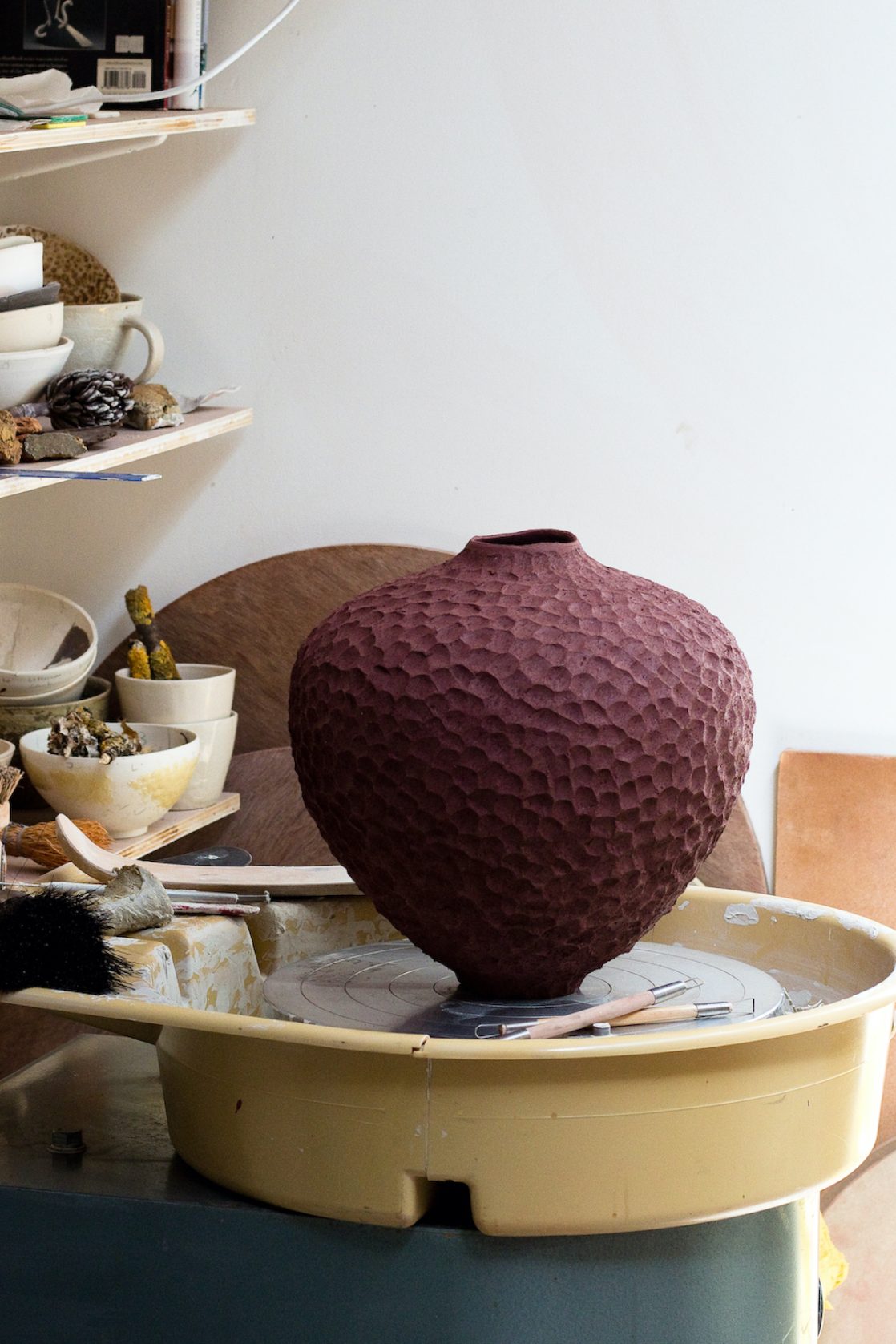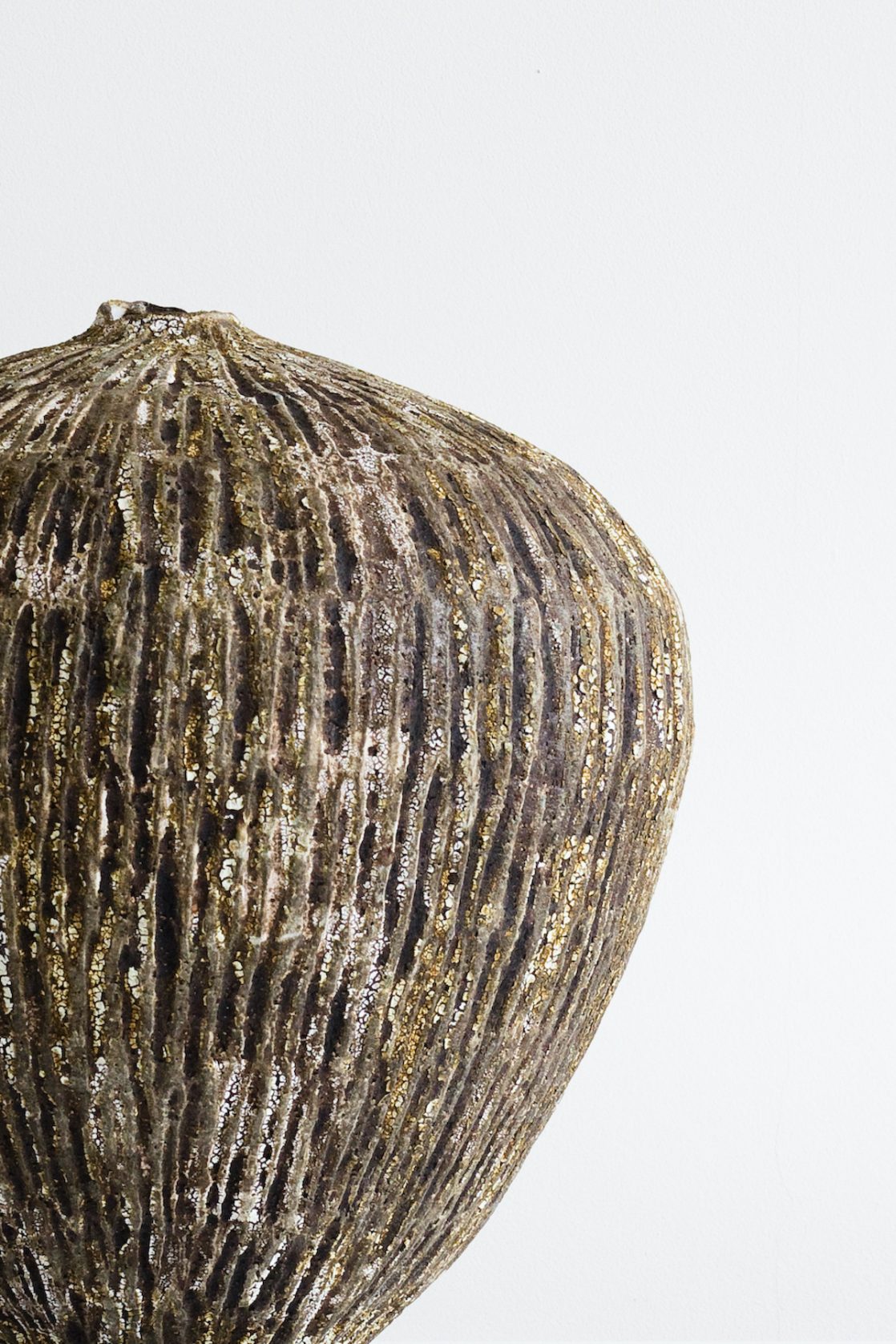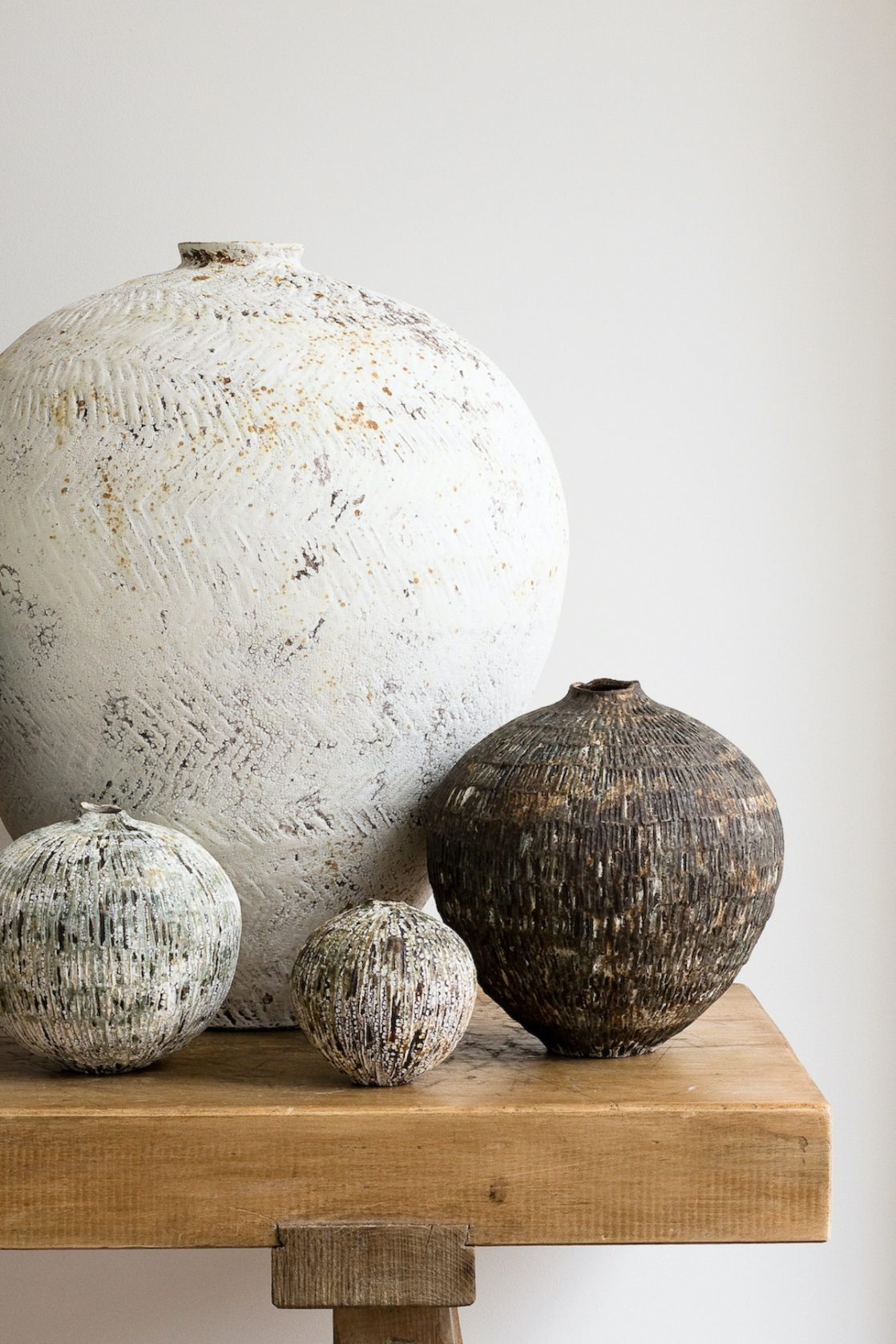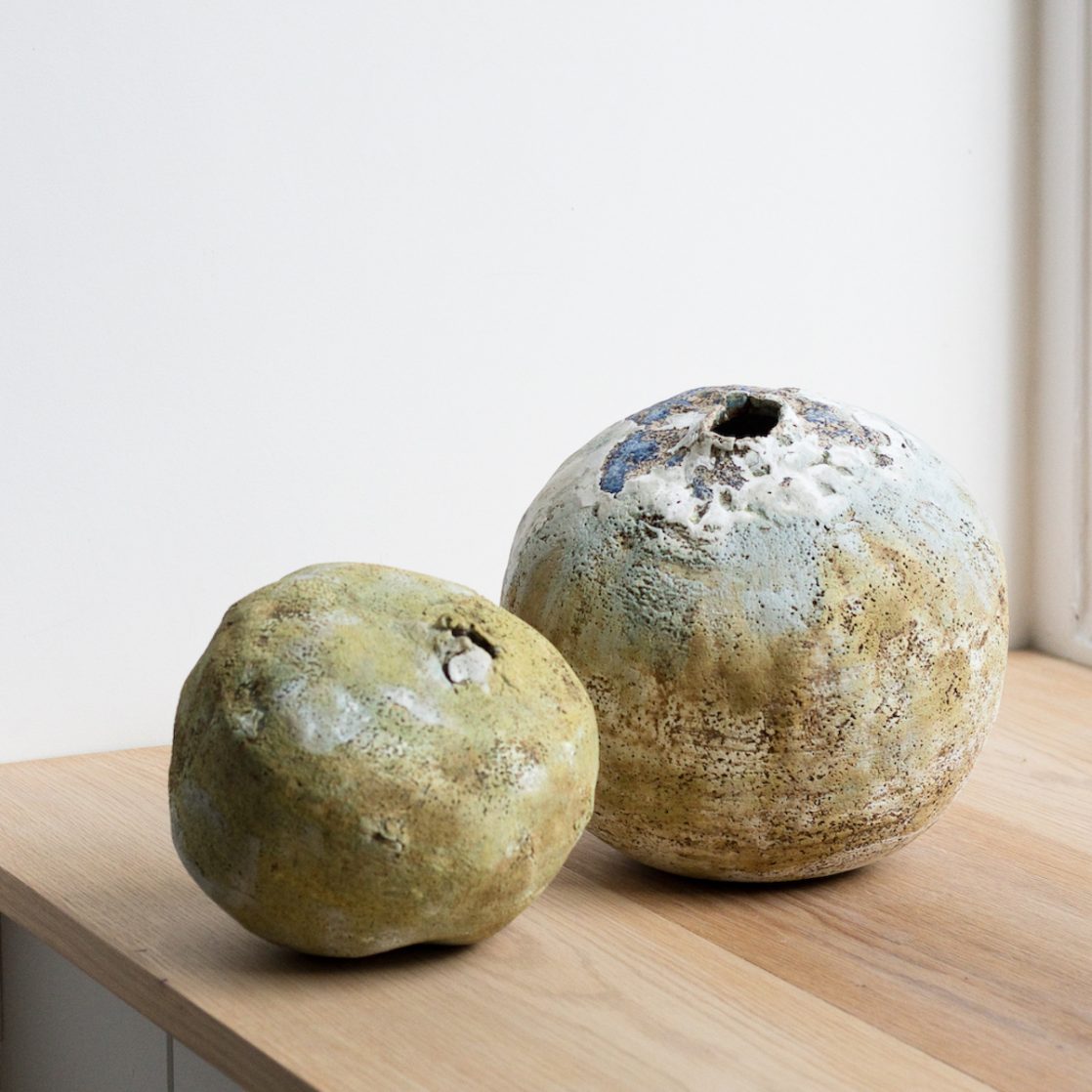Welcome to Ceramic Review
Ceramic Review is the magazine for contemporary and historical ceramics, ceramic art and pottery.
Ceramic Review Issue 334
July/August 2025
Ceramic Review is the magazine for contemporary and historical ceramics, ceramic art and pottery.
July/August 2025
Lise Herud Braten’s organic way of working has resulted in dramatic sculptural forms. She talks to Jane Audas about her journey from cloth to clay

Tucked away deep in South London is Grove Vale – an enclave of brunch cafés, a picturesque food shop and (for our purposes) Grove Vale Ceramics. The gallery was founded by Lise Herud Braten and Amanda-Sue Rope in 2020. The elegant shop front entices with a tasty, curated selection of ceramics, leading back past a small kitchen you arrive in their studio, so, at any given time, visitors might catch the smell of freshly baked ceramics.
Born in Norway, Braten trained for three years in her home country to become a bespoke tailor. In 1996 she came to the UK to do a degree in Fashion and Textiles at Ravensbourne University, which led to a long career
as a couture tailor, eventually working under her own name. A desire to try ceramics always hovered in the background, but she never found the time to do it.
In the end, a dramatic event in her life became a pivotal point for changing careers. A serious road traffic accident and the subsequent physical and mental trauma that followed forced her to slow down and take time out from running her couture business, and about a year later she finally started her first ceramics class at Putney Art School under John Dawson. Not quite realising she had signed up for an intensive wheel-throwing class for her first taste of clay, Braten found she loved it.
‘All I could concentrate on was this lump of clay and the wheel. I finally felt I had found my true material, something that offered me the creative freedom and means to express my longing for the landscape I grew up in, and at the same time a sense of belonging and community that I had struggled to find in the (sometimes superficial) fashion world.’
She immediately signed up for the next class, alongside joining the Kiln Rooms, a shared open-access studio in Peckham, South London.
PERFECTING HER CRAFT
Within a year from first sitting down at a wheel she had a small market stall with maker friends on Putney Embankment and experienced the joy of selling her first few pieces. ‘In the beginning I made quite a lot of tableware, plates and teacups,’ she explains. ‘They didn’t really excite me, but it was good practice and they sold.’ Soon, though, she realised that wasn’t the route for her. Having begun to delve into the world of ceramics, visiting exhibitions and seeing what was possible, she wanted something ‘freer and more organic.’ A course with Japanese ceramicist Shozo Michikawa at West Dean College proved to be just the ticket. ‘He showed us all these completely mad techniques of how to do things and it blew my mind.’


Talking to Braten, you can tell she is a ceramicist who likes to circumnavigate precision and find more holistic ways to make her work, possibly in reaction to spending years perfecting her craft in tailoring. About 80% of her work – mainly her vases – are wheel-thrown. But after the Michikawa course, she found herself, slowly, unravelling what she had learnt about ‘proper’ throwing. She began ‘bashing’ pieces and taking away by carving and hacking into the wet clay using various tools, from spatulas to dog brushes. She finds it meditative, making vases in a less mechanical way. Happiness in making is, for her, finding an organic way of working. She instinctively rebels against ‘proper’ construction and more conventional techniques.
It is interesting to speculate about how soon Braten has found her way as a ceramicist. As a second career, perhaps she was hungry to reset her ways of working within ceramics, and confident enough to find her way quickly. As for her materials, she uses black, red and white stoneware with different levels of grog. Her favourite is Scarva Earthstone clay. ‘I don’t really use much conventional glaze. I use lots of slips, oxide washes and engobe.’
NATURAL INFLUENCE
Growing up amongst the dramatic nature of Norway, landscapes and surfaces of the natural world are still a major inspiration. ‘I have a huge photo library on my phone,’ she says. ‘I am constantly taking photos of rocks, bark, lichen, bits of found stuff on the beach, mountains and rock faces.’ In her family cabin in Norway, she enjoys the ice-age landscapes with huge rogue boulders. She has modelled them, somewhat smaller in size, in her work.
Unsurprisingly, Braten’s work has great appeal for interior designers who find her on Instagram and have lots of settings, particularly for her larger, dramatic pieces. As she sees it, though, it is important that she makes both large sculptural work and smaller, more accessible (and cheaper) pieces. ‘There is an affirmation when you make something, and somebody picks it up and says: I have to take this home. It’s the biggest compliment.’ This speaks, perhaps, to why she chose to open a gallery. While I was interviewing Braten at Grove Vale, customers came in and she was obviously delighted to meet and help them.
You will experience no hushed reverence in the gallery, rather a voluble, shared love of ceramics.


Braten met her ‘partner in crime’ at Grove Vale Ceramics, Amanda-Sue Rope, when they both had studios at the Kiln Rooms. By the time they had both reached a point where they wanted to get more serious about ceramics and move into their own studio, they decided they wanted to share. Grove Vale came to their notice in a roundabout way through a friend. They converted it themselves, securing a three-phase electricity supply to run a nice big kiln. Then the pandemic halted everything. Finally opening in 2020, they decided to run the gallery as a membership, which currently numbers eight ceramicists. They also have guest artists at the gallery, ‘where we get to play gallerists,’ and the next one, Braten says excitedly, is Sarah Jenkins.
‘There are two things we hadn’t expected when we opened the gallery,’ she adds. ‘The first is the community we have created. We are all so supportive of each other – we are each other’s champions. The other is that when you are working in a traditional studio you don’t really see your finished pieces in context because it is a dusty environment with lots of stuff going on. So being able to just walk from the studio in the back, put the piece on the table and have a look at it in the natural light; it has really sped up my development process. You get feedback straight away. You can try something new and different, put it out here and gauge whether it is something you want to continue with. Or not.’
Braten’s ceramics are forces of nature, with an intensity and presence that resonate beyond their footprint. Her complete immersion into ceramics so far has left her open and willing to try things, to embrace change within her practice. There has also been change to embrace within herself, too. All in all, life is different now, and better. From a career where dressing ‘just so’ to impress her wedding dress clients was imperative, she now tells it differently. ‘The grubbier my hands are each day, the happier I am.’
For more information visit coloursoftheland.com; @coloursoftheland
Images: courtesy of the artist
